Mobile app ratings are all about reaching the stars, quite literally.
In the end, app ratings and reviews can make or break your reputation in the app store. They are a form of digital validation, reflecting the real app experience your users have. You can also think of them as a pat on the back for the work you did internally to build the customer-centric approach that led to those 5-star ratings.
In this blog, I'll share tips on lighting up your star game, ensuring it not only shines in the app store but also in the hearts of its users.
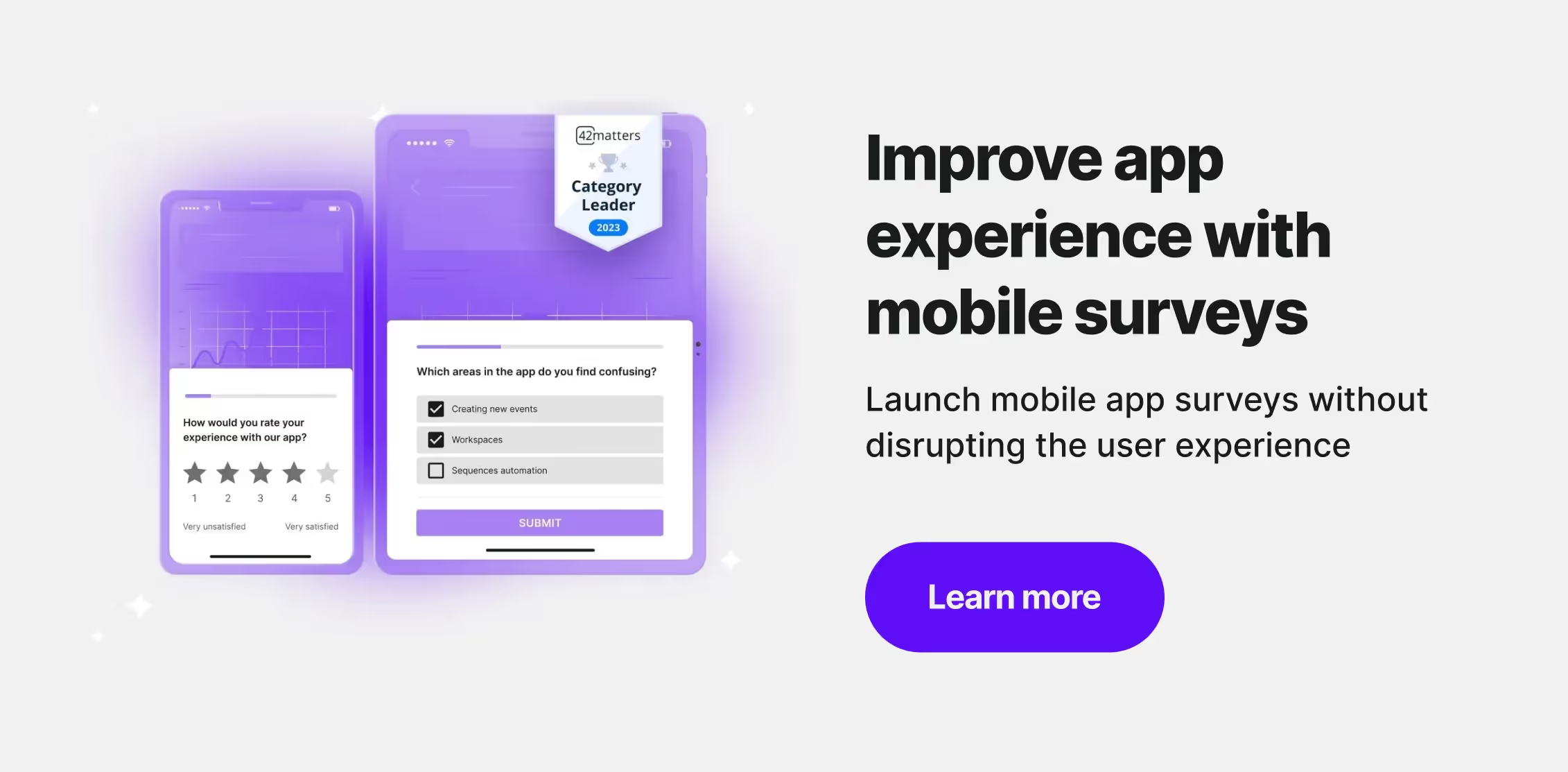
What are app ratings and reviews?
App ratings and reviews are feedback mechanisms available on app stores (like the Apple App Store and Google Play Store) that allow users to evaluate and share their experiences with a mobile or web application.
High app ratings and positive reviews boost an app's visibility in search results and category listings. An app with a consistent 4 or 5-star rating not only garners more downloads but also secures loyal users, which is the ultimate aim for any app developer.
What is a good app rating?
Ratings and reviews are the lifeblood of any app's success. While a full 5-star rating is the pinnacle of approval, apps consistently achieving a rating between 4 and 5 stars are definitely top-tier. It means the users recommend them and value their functionality and user experience
However, venturing down the rating scale reveals a different story. The app downloads drop dramatically as its stars decrease, with as much as 50% of users sidestepping 3-star apps and nearly 85% avoiding those with a 2-star rating.
The message is clear—to thrive, you need those 5-star ratings.
But there's yet another factor in play. While focusing on the quality of your mobile app reviews and ratings, don't forget about the quantity. An app with a 4.4-star rating but thousands of reviews will still be considered better than a 5-star one with only a few comments.
Why do app reviews matter?
Primarily because they matter to people. Customer behavior research confirms that review interaction—searching, filtering, expanding, and reading reviews—went up by 50% compared to pre-pandemic levels. Yup, the long-run COVID consequences are here to stay.
It means—as a Product Manager, App Developer, or Mobile App Marketer—you just cannot ignore the app ratings.
High app rating boosts downloads
77% of people read at least one review before downloading a free app. That number jumps to 80% for a paid app.
App ratings will have a colossal impact on the number of downloads you have. App reviews are the fundamental health check for any of your potential users. Ultimately, no one wants to risk a buggy app crashing on their mobile.
The higher your app rating, the better the chances of downloading.
App reviews influence ranking in the app store
It's not only that. App ratings are also crucial from the App Store Optimization (or ASO) point of view. I won't be diving into the deep waters of ASO, but think of it as the SEO for mobile apps to get some explanation.
So, no surprises, the better your app rating is, the more chances it'll give you a boost in organic position in the app store.
App ratings and reviews are a part of your brand's experience
Users landing on your app store listing immediately encounter the relevant app ratings and reviews. They are an integral part of the brand experience you serve and directly impact users' perception.
So naturally, high ratings and positive app reviews will form a better impression, than negative reviews along with poor ratings. It is time to roll up your sleeves to maintain a positive brand image, as it can consistently improve app ratings and reviews.
Differences between Google Play and Apple App Store ratings
Substantially, Google Play and Apple App Store understand app ratings and reviews similarly and use them to inform potential users about the mobile app's condition. They also offer a 1 to 5-star rating scale and written reviews.
However, as you delve deeper, you notice they have slightly different mechanisms for managing app ratings and reviews.
How keywords in app reviews influence ranking
- Google Play: It considers keywords within app reviews as part of its ranking algorithm. Developers can benefit by including priority keywords in their responses.
- Apple App Store: It doesn't take into account keywords in user reviews for app ranking. You can only back up with the iOS keyword field to add keywords that are missing from your metadata.
Highlighted app reviews
- Apple App Store: It showcases around six reviews regardless of their age or rating.
- Google Play: It highlights the most positive and negative reviews.
In both cases, you should always respond, especially to negative comments, to show that you genuinely care about your users and to foster better user engagement
App store ratings calculation
- Google Play: It places more emphasis on recent app ratings.
- Apple App Store: It determines the overall rating by taking the average of all ratings received.
Resetting app store ratings
- Google Play: It doesn't allow ratings to be reset.
- Apple App Store: It allows for a ratings reset with the release of a new version, but it may impact user trust.
App store insights and reporting
- Google Play: It offers detailed analytics through its Play Console.
- Apple App Store: It provides basic insights with App Store Connect, but it may be necessary to use third-party tools to dig deep into data.
7 ways to improve app ratings and reviews
There are some proven methods to climb up the star ladder. Some are obvious and easy to implement, while others may require more work. However, with what's at stake, it might be worth it.
1. Ask your app users
As simple as it gets, asking for user feedback is definitely the most straightforward way to get more reviews. Now, will they improve your ratings? That's another question. To get the most out of reaching out to your users, you need to do it right.
Choose the right time
The golden rule for requesting a review on a mobile app is to time your prompt for when your user is happy. It can be right after a memorable user experience or at a specific milestone in the app.
Choose an even better time
Some sources encourage ditching the traditional way and hitting the user immediately. Maybe not directly after they launch the app, though—it can have dire consequences of annoyed users giving you a one-star rating and a nasty review.
It may be worth a try to incorporate the review prompt into your mobile app's onboarding process or right after the paywall. Apparently, you can get some satisfying results quickly.
Just don't over-prompt
While it's essential to ask, knowing when to hold back is equally crucial.
Constantly nudging users for reviews can be counterproductive, leading to irritation and possibly, negative feedback. It's imperative to maintain a balanced approach.
Engage you app users
Engaging app users can have a ripple effect on reviews and ratings.
Building a sense of community and interactivity can elevate satisfaction levels, nudging your users towards leaving positive feedback.
Consider incorporating in-app prompts after a user successfully completes a task or achieves an in-app milestone, turning achievements into potential positive reviews.
2. Reply to (negative) feedback quickly
When managing your app's reputation, consistent engagement with user reviews is the key. Regularly checking reviews gives you a deeper understanding of user experience and potential pain points they might face.
And seriously, prioritize addressing negative comments. While it's natural you feel a bit disheartened by unfavorable feedback, responding with a personalized touch can make a difference.
A “We're sorry for the inconvenience” template can be like a red rag to a bull. Always thank for the feedback, apologize for not meeting your users' expectations, and avoid confrontational language.
If there's an immediate solution or a workaround that may work for a particular information—share it. And don't forget to inform the user about any actions you've taken to address their concerns. In essence, clear communication can enhance your app's ratings and foster a sense of trust with your user base.
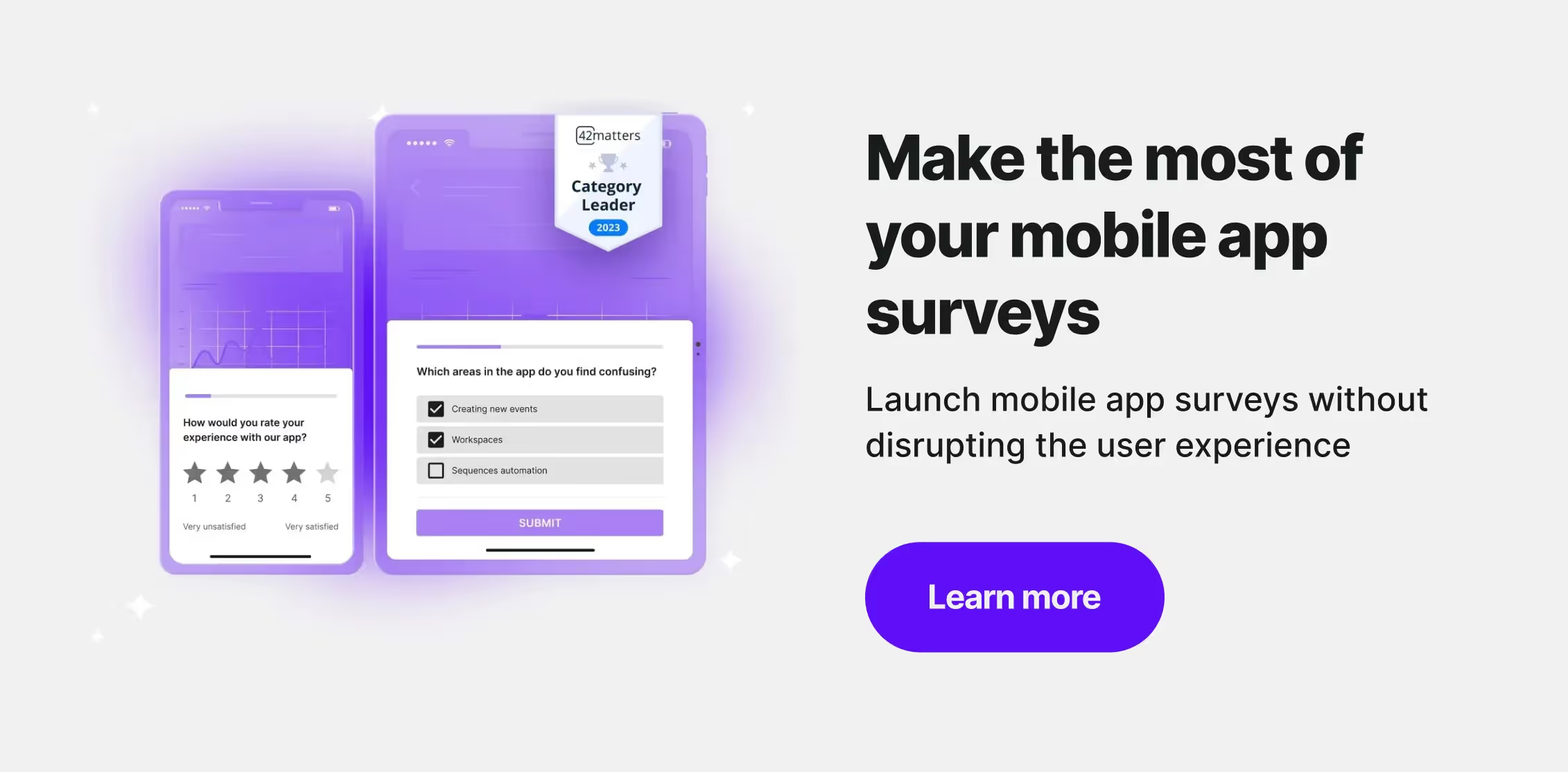
3. Collect mobile app feedback
The 2023 Mobile App Feedback Report clearly shows that adding in-app mobile surveys to your feedback collection methods can enhance the effectiveness of gathering user insights by 8%. And they can also save your app store page from unfavorable reviews (and falling stars).
Your mobile app is the most natural connection between your users and you. Why not take this advantage and ask them for feedback in-app? Just remember, users launch the app to use it without getting interrogated. That’s why you need to be smart with mobile app surveys.
I will show you how effortless it is to collect feedback with Survicate. You just need to set it up first ⤵️
- Install the Mobile SDK
The Survicate Mobile SDK supports iOS and Android, React Native, Flutter, and Unity applications. Once the kit is installed, you can create and edit mobile surveys in the Survicate panel. - Carefully target your audience
If you want to get the feedback crème de la crème, then you need to cook your targeting options carefully. With Survicate, you can target specific screens (specific locations in the app) and events (particular moments). It gives you a handful of options to capture the right user. - Have a clear goal
Before you venture to create mobile surveys, first set up clear goals you want to achieve. Is it a product feedback? Opinions on the last update? Or general user satisfaction? Be specific about it, and choose one goal per survey. - Be brief
You can easily disrupt a mobile experience with a lengthy survey. In this case, I’d try microsurveys. Ask brief 2-3 questions and quickly capture user insights without friction. And if you need to launch more extensive research, you can use Medscape’s trick—contextual micro surveys to invite users for bulkier email surveys. - Choose wisely, and be brief—don’t go for long, complex questions. Micro surveys work best on mobile apps.
With Survicate, you can collect all sorts of feedback. You can launch quantitative and qualitative surveys to understand what your users think about your mobile app.
You can use survey logic better to tailor a mobile survey to your user’s answers. Depending on how they respond, it will customize the flow, making the survey concise but personalized.
We made a whole webinar about unlocking the power of mobile app surveys. Watch it to get even more handy tips from our experts ⤵️
You can also use our AI-powered survey library to speed up the creation process. Here is what you can use Survicate’s mobile surveys for.
User Satisfaction
The classic Customer Satisfaction Score is a well-rounded metric for measuring your users' mobile app satisfaction. It helps understand their needs and potential areas of improvement.
Product feedback
Collect product insights directly from your users to help you in product research to prioritize the roadmap and catch any flaws in the usability of your features.
User experience
Check how your users evaluate their experience with your app, and help your UX teams gather valuable data to make a genuinely sticky app.
Quickly check your pricing messaging clarity with this survey template ⤵️
Customer Support
Make sure you’re customer support service keeps up with the industry standard. For over 70% of customers, good customer support experience means resolving issues fast. Otherwise, the frustration can turn into a bad review.
4. Manage all your app reviews and feedback in one place
There are so many feedback sources it can be overwhelming to handle it a structured way. However, it's necessary to have a reliable source of truth if you want your app rank higher.
You can start with a Google sheet, but if you receive a lot of user feedback you may quickly outgrow it. For more scalable operations, choose one of the AI-powered customer feedback management tools like Survicate's Insights Hub.
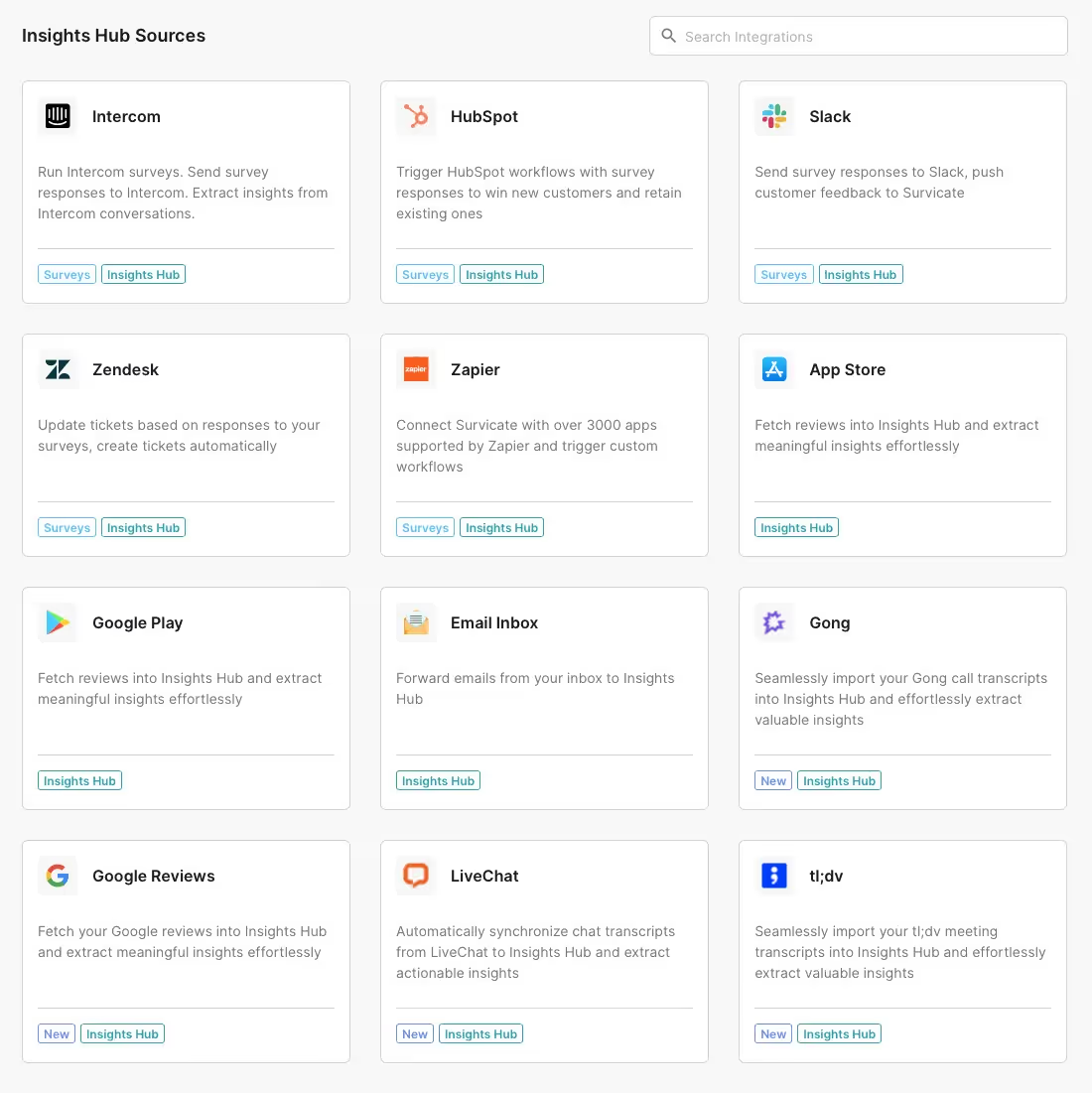
All you need to do is connect all your feedback sources, like app store reviews, survey results, or support chats, and the rest happens automatically. Insights Hub aggregates all entries into topics annotating each of them with sentiment, to enable sentiment analysis.
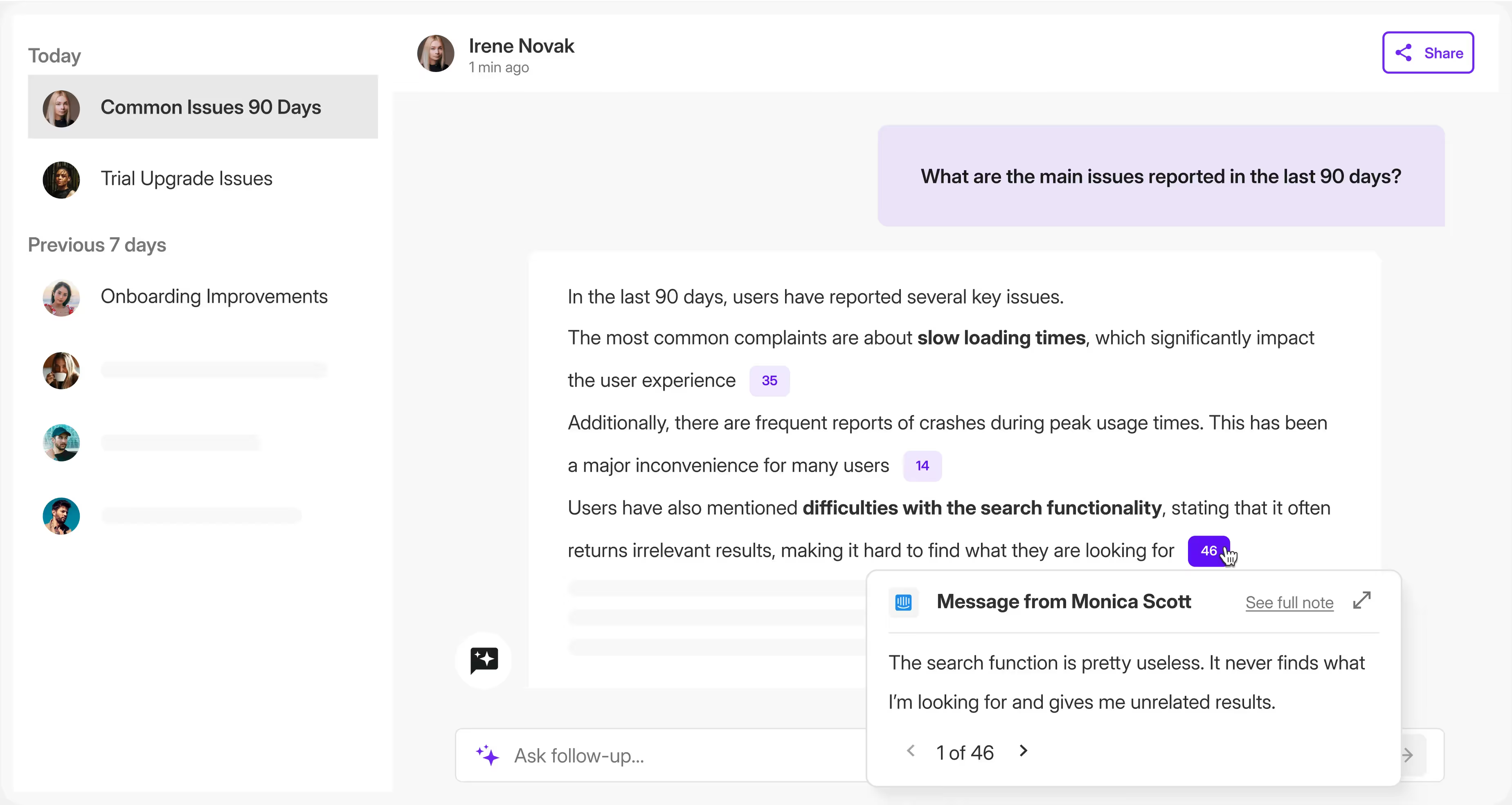
If you have any questions, for example: ""Why my app store reviews have gotten worse in the last three months?" or "What do my users suggest most often, so I can improve app ratings?" you can ask Research Assistant, an AI chat that uses data from Insights Hub to answer.
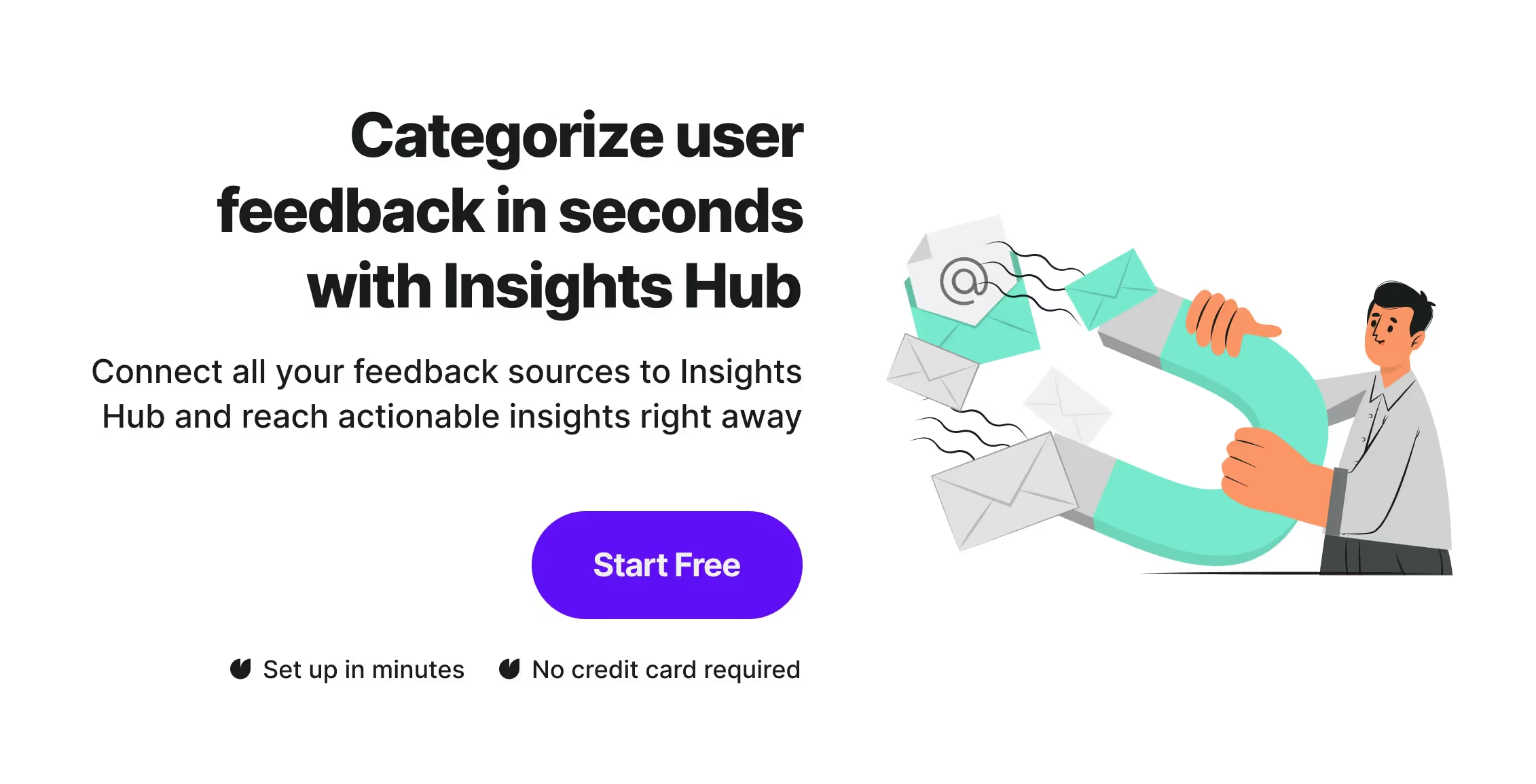
5. Close the feedback loop
Getting feedback is the first step, but acting upon it is the real thing. Creating a feedback loop may be one of the most powerful encouragements for your users to engage. Doesn't it make you feel appreciated when your opinion is heard and taken into consideration?
What's more, by collecting feedback continuously, you can spot negative trends quickly and prioritize the features your users are missing. When you have all the data on your plate, it's easier to optimize and update your app in a way that makes your users happy and not spit fire into your app store reviews.
When you have a round of feedback collected and analyzed, it's time to plan the next steps and update the roadmap. You can let your users know the features they were longing for now have a tangible release date.
And when they're released—contact the ones that historically complained. It can change the negative reviews into five-star ones. Listen, act, and communicate!
6. Try in-app user feedback
We all crave feedback, for the good and the bad, but wouldn’t it be great to save some of the roast from the app store and read it in the comfort of your own office? Although it’s not an official Survicate feature, you can actually code it into your app quite easily.
You’d first have to add a “Give us feedback” button or icon to your app’s interface. In the next step, you’d have to create a mobile survey triggered by a custom event that—in this case—would be pressing that button. Et voila, you can collect user feedback before it hits your store reviews.
7. Run regular app updates
Regular, monthly updates give you space to fix bugs and remove outdated elements, but also to release features requested by users.
People love new features, and providing them with regular improvements shows you actually care about the experience they’re having with your app. That being said, small, incremental changes tend to work better than revolutionary makeovers.
Keeping app maintenance at a high level can have a positive impact on your app’s rating. Both Google Play and App Store show when was the last time you updated your app. Periodic updates will add to your credibility, and this can result in a higher app rating and more downloads.
Improve your mobile app ratings with Survicate
Elevating your mobile app rating takes more than just stellar functionality and seamless design—it requires a robust strategy to capture and leverage user feedback.
This is where Survicate steps into the limelight, acting as your key partner in bolstering your app's reputation and user satisfaction. Thanks to Survicate, your app can benefit by harnessing direct user feedback through unintrusive mobile app surveys.
Moreover, Survicate helps you make continuous improvements through iterative changes based on real-time feedback. You can design complete feedback loops to optimize your app regularly, making sure it evolves in line with user expectations and needs.
Providing an app experience that is constantly fine-tuned and improved on actual user feedback not only works for retaining your existing users but also for converting new ones into loyal fans.
It’s always a good day to start. Sign up for our 10-day free trial and get access to all of the Best plan features immediately!










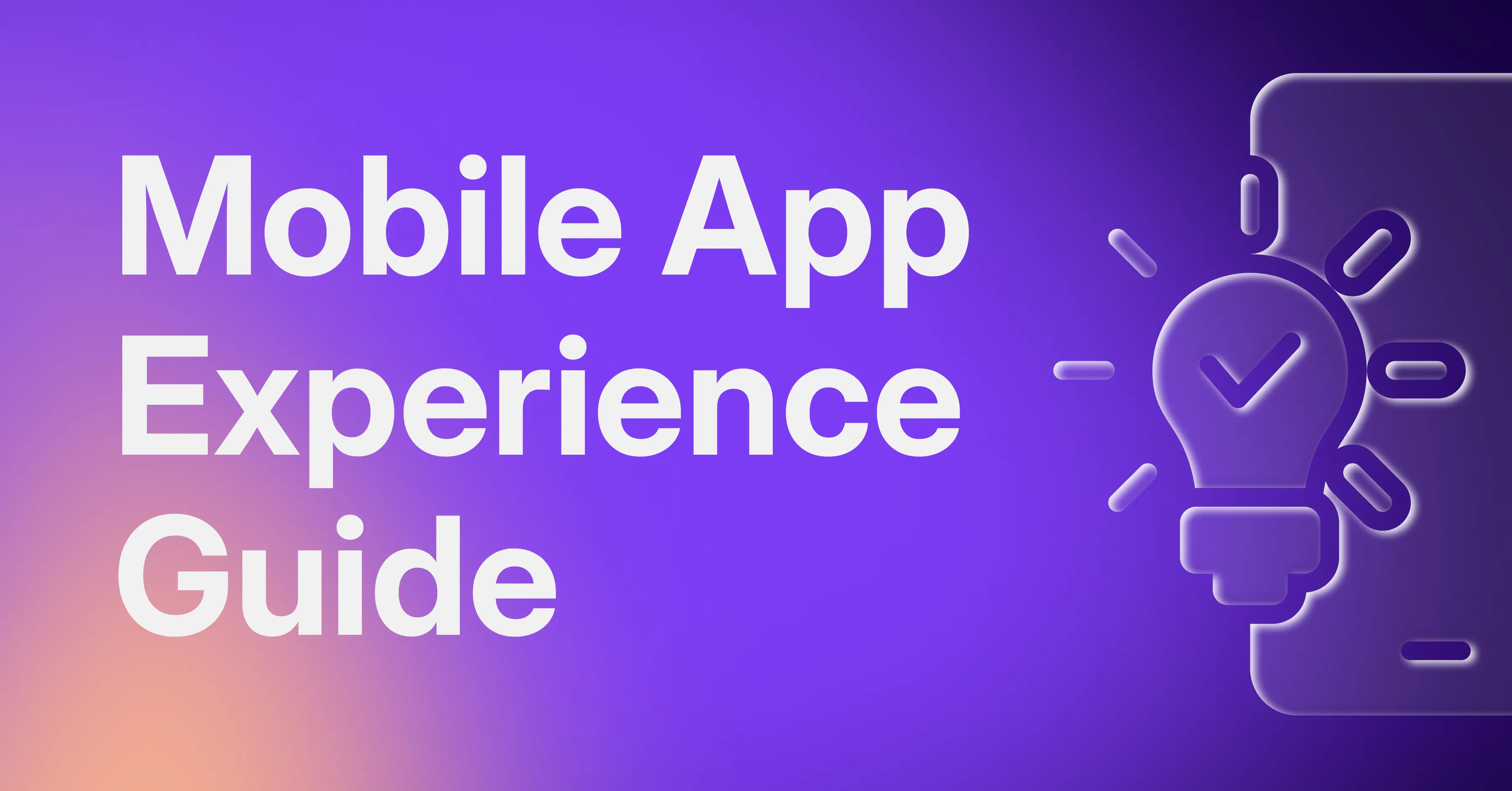



.svg)

.svg)



